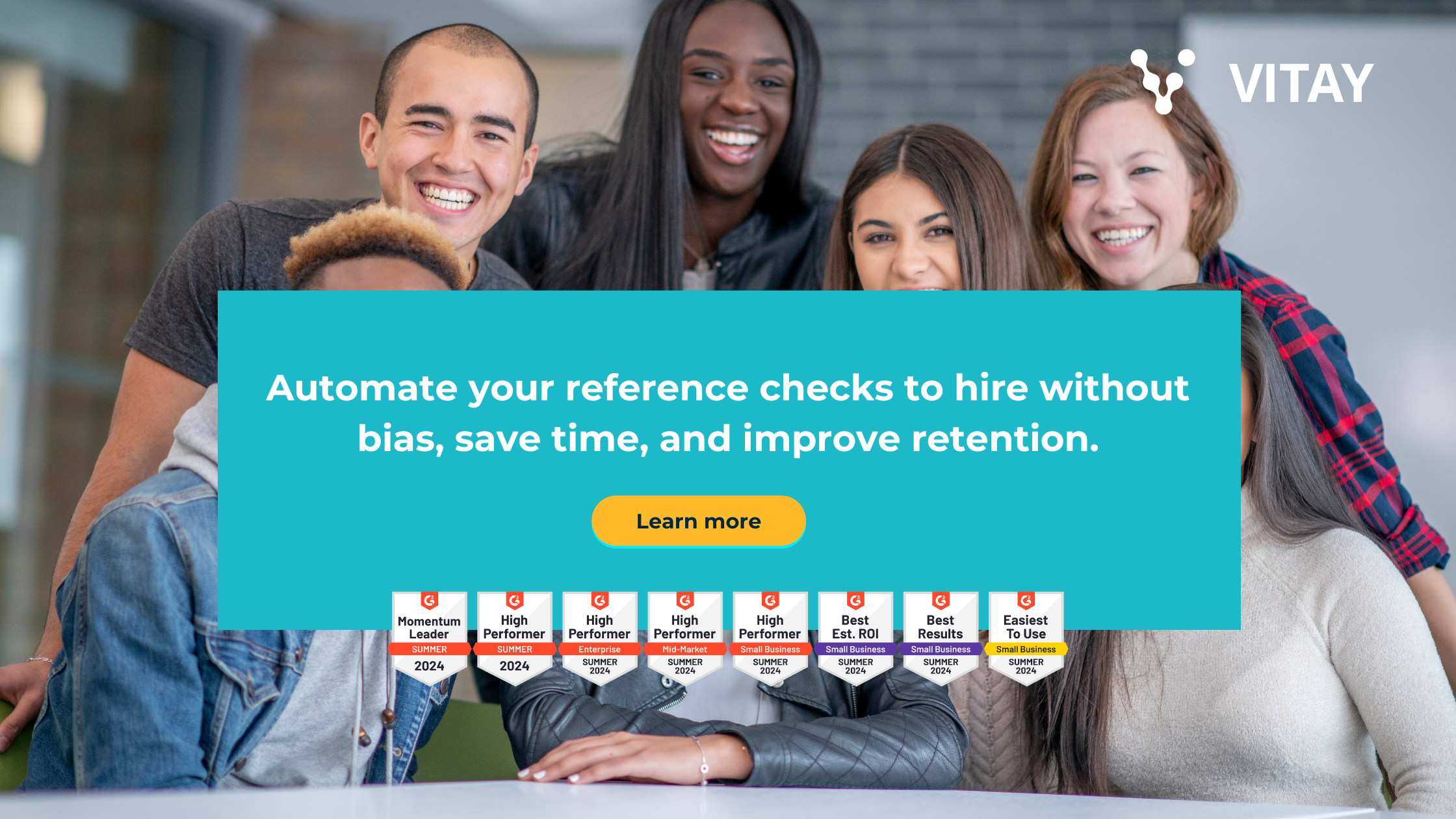In today’s hyper-competitive business landscape, using all the tools at your disposal is the trick to staying ahead. Due to technological advancements, there are so many recruiting channels to explore to find the right fit. Successful recruiters and business leaders know how to identify and leverage the most effective ones.
We’ve pulled together some information on the most impactful recruiting channels that savvy organizations are using. These are some of the best avenues for finding (and acquiring) top talent.
Candidate Rediscovery
Candidate rediscovery involves revisiting previous applicants and candidates who may have been overlooked. Many organizations maintain a database of past applicants, which can be a goldmine for finding talent that previously did not fit specific roles. Companies can save time and resources by reaching out to these candidates for new opportunities while potentially finding a great match.
Traditionally, many companies did not engage in this tactic because it can be time-consuming to dig through old applications. However, with the advancements in technology – especially around AI – recruiters can utilize more innovative methods to accomplish this.
Here are some unique ways that today’s technology can make candidate rediscovery simpler, and faster.
- Machine Learning (ML) – Algorithms can enable AI systems that learn from data and improve predictions over time. For candidate rediscovery, ML can be used to predict which of your past applicants is more likely to be a proper fit for your current openings.
- Natural Language Processing (NLP) – This technology allows AI to understand and interpret human language. Over time, it has become critical in analyzing resumes, cover letters, and other text-based documents. NLP helps AI systems to identify candidates with the correct skills, experience, and qualifications – even if they were originally described differently in their initial application.
- Data Mining – Data mining involves extracting helpful information from large amounts of data. Currently, AI tools can use data mining techniques to pick through vast amounts of candidate data, finding patterns and trends that improve recruitment decisions.
- Predictive Analytics – Predictive analytics uses historical data to predict future outcomes. In candidate rediscovery, predictive analytics can be used to identify the candidates who are most likely to be interested in a new opportunity. This technology can also be used to predict which traits or past experiences will lend well to new openings.
Email Campaigns
Email campaigns can be an effective way to reach both passive and active candidates. Building a talent pipeline through newsletters or job alerts keeps potential candidates informed about job openings and company news. Personalized emails can also enhance engagement, making candidates feel valued and more likely to apply. Segmenting the audience based on skills and interests can further optimize outreach efforts.
Need some tips for optimizing a recruiting email campaign? Try the following:
- Keep your email list updated – Update your list frequently to ensure it aligns with candidate interests. For example, if someone expressed an interest in a certain position but then applied for a different department, you want to make sure you have their latest aspirations captured.
- Segment your list so that potential candidates only receive information that is relevant to them – By categorizing your candidates, you can ensure that they receive relevant information, tips, and job offers.
- Send a variety of content, some of which should be helpful – It’s important to send other information besides job information. You want to be viewed as a trusted resource, so make sure to send valuable information that can help people in other ways too.
- Create an automated welcome email for everyone who joins your email list – A generic welcome message should be sent to anyone who signs up for your newsletter or updates. It shouldn’t be career-specific, but general information that gives a great impression of your brand.
- Nurture top talent by regularly reaching out – When people are in the job search process, they want updates and news on their status. If people have applied with your company, make sure to keep them in the loop on their application and where the process stands. This is valuable and makes them more likely to apply again in the future.
- Share key information about company roles with candidates – Do potential candidates understand enough about what the different jobs in your company do? You can highlight the necessary tasks and talents by sending emails such as “A day in the life of [specific role].”
- Don’t be afraid to send cold emails to your best passive candidates – This approach is best for senior roles. If someone has passed on a previous role, but might be right for a new opening, don’t be afraid to reach out with a carefully structured email.
- Make sure emails are professional, clear, and optimized – Just like your marketing emails, these emails need to be engaging, mobile-friendly, and personalized.
Trade Journals
Trade journals and industry publications are valuable resources for reaching specialized candidates. Advertising job openings in these publications target professionals who are already invested in their field. Furthermore, contributing articles or insights can enhance a company’s reputation as a thought leader, attracting talent interested in working for a reputable organization.
You can use this WebWire tool to find publications that are relevant to your industry. You’ll find everything from aviation to consumer electronics represented.
Internal Recruitment
Internal recruitment is often overlooked but can yield significant benefits. Promoting existing employees for new roles not only boosts morale but also reduces the time and costs associated with external hiring. Employees already familiar with the company culture and processes are likely to transition smoothly into new positions. Implementing career development programs can help employees grow within the organization, creating a more skilled and loyal workforce.
Make a point of encouraging employees to apply for other open positions in your organization using these tips:
- Communicate open positions – People can’t apply for a job they don’t know is open. Make sure that you have a program in place for sharing which positions have opened up and what the right qualifications are. Ideally, there is a formal way of doing this so that it happens for every role and employees understand the process.
- Create a positive work environment and company culture – The more that people enjoy working within your company, the longer they’ll want to stay. Consider what else you can do to make a new career in your organization attractive to your employees. If you notice you have a low rate of internal applications, you may have some cultural issues to resolve.
- Ensure compensation and benefits are market rate – If people believe they need to leave your company to make more money, that’s what they will plan to do. Consult market studies if you need to so that you can be sure your benefits package is competitive.
- Offer support for internal applications – You want to make the process as simple as possible. You can take things a step further by providing feedback on an applicant’s resume, brushing up on interview skills, and connecting with the right people. If you want to promote from within, go beyond just telling candidates which job to apply for and help to advocate for them.
- Ensure proper training is provided – Sometimes candidates don’t apply for new roles because they aren’t sure they have the right skill set. Make sure your employees know that you are excited about hiring internally and are happy to provide the necessary training and education.
Online Job Boards
When you think of a job search, you probably think of a website like Indeed. Online job boards are one of the most popular and accessible recruitment channels for any person or organization. Research shows that Gen Z and millennials in particular tend to apply for jobs using their mobile devices (including entry-level, mid-career, blue-collar, and more). Websites like Monster and Glassdoor allow employers to post job vacancies and reach a larger audience.
These platforms facilitate targeted searches and allow candidates to filter jobs based on their qualifications, location, and preferences. Employers can enhance their visibility by utilizing paid postings or sponsorships, pushing their listings to the top of search results. Online job boards should be a natural first choice for those with open roles because they’re often the primary place where job searchers look for openings.
Company and Corporate Websites
A company’s website serves as a powerful recruiting tool. By creating a careers page that showcases company culture, benefits, and job openings, organizations can attract potential candidates directly. This channel allows companies to present their brand and values, giving candidates a glimpse of what it’s like to work there. Including employee testimonials and insights into daily operations can further enhance engagement and interest.
Employee Referrals
Did you know that there is a hidden job market? The truth is that many job openings are never even posted – they end up filled by people making the right connections. Some research shows that up to 60% of jobs are actually found through networking.
This makes employee referrals one of the most effective recruiting channels, often leading to high-quality hires. Even better, employees have a good understanding of the company culture and job requirements, making them valuable sources for recommendations. They’re unlikely to risk their reputation by recommending someone they know is unfit for the job.
Implementing a structured referral program with incentives can motivate employees to refer suitable candidates. Referrals typically result in faster hires and higher retention rates, as referred candidates often have a better cultural fit.
Social Media
Social media platforms like LinkedIn, Facebook, and Twitter have transformed the recruiting landscape. Organizations can leverage these platforms to promote job openings, share company news, and engage with potential candidates.
LinkedIn, in particular, is a powerful tool for professional networking and sourcing candidates. Right now, LinkedIn is the most-used channel for recruitment efforts. While LinkedIn offers helpful tools for job seekers, it’s also a convenient way for recruiters to reach out to prospective candidates about particular opportunities. Employers can use advanced search features to identify talent based on specific skills and experience while engaging content can help showcase the company’s culture and values.
If you don’t have a LinkedIn profile (or haven’t reviewed your profile in a while), you could be missing out on chances to connect with an ideal candidate.
Events
Attending or hosting recruitment events, such as job fairs, industry conferences, and networking events, can significantly enhance a company’s visibility. These events provide opportunities for face-to-face interactions between employers and potential candidates. Engaging with candidates in person allows recruiters to assess soft skills and cultural fit more effectively. Additionally, participating in industry-specific events can help companies connect with niche talent pools.
This channel is especially helpful for connecting with passive candidates who aren’t actively searching for a job (and therefore are not visiting job boards). According to a TopResume survey, more than 70% of the employed respondents said that they were in an “open relationship” with their job – meaning they were open to new job opportunities if they were to come up. Networking or industry events are an easy way to meet these people, and then you can reach out to them when the right role arises.
Modern recruiters should thoroughly understand each of these channels and use them in their search for open roles. Recruiters can also streamline their efforts and make finding top talent easier than ever by leveraging Vitay’s employment screening software. The platform uses collective intelligence to gain candidate insights and feedback, and automated reference checking allows recruiters to request references in just 60 seconds. Vitay’s powerful tools help recruiters reduce the administrative effort that comes with talent acquisition.





Comments are closed.